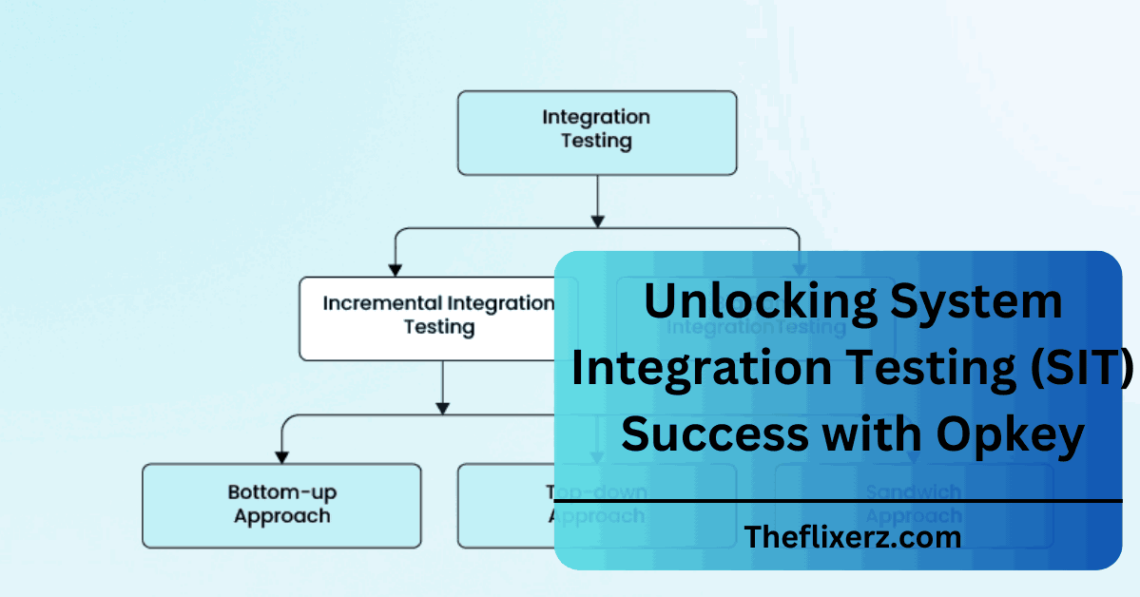
Unlocking System Integration Testing (SIT) Success with Opkey: A Comprehensive Approach
In the software development lifecycle, System Integration Testing (SIT) emerges as a crucial phase; here, we test individual system components together to validate their collective functionality. This process of validating the seamless operation of different subsystems or modules upon integration aims not merely at early identification but also resolution of compatibility issues.
Ultimately, system integration testing assumes a pivotal role in ensuring reliability, functionality and performance for intricate systems. Below are some key reasons why conducting SIT is essential:
Validates interoperability
Evaluating how various system components interact and exchange data, SIT ensures the seamlessness of these interactions. It critically validates that the integrated system communicates effectively across its diverse modules, a process particularly indispensable in systems requiring multiple software or hardware elements to collaborate for delivering intended functionality.
Identifies interface errors
Different modules or subsystems often encounter errors at their interfaces, including data format mismatches, protocol inconsistencies and communication failures.
The SIT process plays a crucial role in recognizing these interface issues and resolving them before they amplify into critical problems during advanced development stages or deployment. It guarantees seamless data flow and communication between system components by conducting thorough interface tests.
Ensures end-to-end functionality
It’s the process that meticulously evaluates, through a comprehensive approach, all integrated system components to ensure they work together harmoniously and deliver desired outcomes.
This verification involves not only assessing individual module functionalities but also scrutinizing their combined functionalities within an entire system. This methodical examination is critical in identifying any potential discrepancies or defects arising from component integration; thus, enhancing overall performance reliability.
Validates system architecture
SIT offers an opportunity to validate the system’s overall architecture by evaluating component alignment with specific design and specifications. It’s a crucial step in ensuring that intended functionalities are supported as well as meeting performance requirements.
This process also allows for early identification and rectification of any architectural flaws or inconsistencies; thus, significantly enhancing development lifecycle efficiencies.
Mitigates risks early
Early in the development process, conducting SIT mitigates risks associated with system integration. It enables developers to promptly detect and address potential issues, a crucial step in preventing delays, cost overruns or system failures during later stages of development or deployment.
Moreover, this strategy facilitates efficient resource allocation and enhances risk management strategies through its emphasis on early detection.
Enhances system reliability and stability
By engaging in thorough integration testing, developers identify and rectify potential vulnerabilities that could compromise the system’s reliability or stability.
SIT, therefore, plays a crucial role. It uncovers defects or inconsistencies, issues with significant impact on the performance and stability of the integrated system. This ensures not just reliability under various conditions and scenarios but also enhances overall operational functionality.
Facilitates seamless deployment
By successfully conducting SIT, organizations validate the functionality, performance, and reliability of an integrated system. This step ensures that upon deployment into production environments without any major integration-related issues, the organization can proceed with confidence.
This process of seamless deployment not only minimizes downtime and disruptions but also mitigates risks associated with system integration failures.
Conclusion
To sum up, the importance of integration testing cannot be undermined in software testing. But it has its own challenges for which you need a reliable testing tool. Here is where businesses can leverage Opkey. Opkey is a no-code automated testing tool, which can navigate the complexities of integration testing. This solution empowers organizations and allows them not only to conduct but also execute seamlessly their system integration tests.
Opkey’s no-code platform simplifies test automation. It empowers testers and business analysts to execute automated tests, a process that previously demanded extensive programming knowledge, without any need for complex coding. It caters to diverse testing needs across various platforms by providing comprehensive end-to-end coverage, supporting over 12 ERPs and more than 150 technologies.
Its Quality Lifecycle Management (QLM) feature provides centralized control, ensures seamless traceability and offers advanced reporting capabilities. This enhances collaboration and efficiency throughout the testing process. The platform’s self-configuring engine and self-healing technology streamline the setup and maintenance of test environments. They ensure, even amidst application changes, that tests remain functional.
Opkey offers pre-built test accelerators for a range of ERPs. It harnesses AI-driven test discovery to automate current test cases, thus prioritizing testing efforts with efficiency. Opkey’s dedication to customer support, its provision of comprehensive training resources, and the implementation of certification programs bolster its standing as a trustworthy partner in facilitating seamless integration testing.
Opkey essentially provides organizations with the necessary tools and support for confident integration testing. This ensures their systems’ reliability, functionality, and performance.
You May Also Like

eggy car github
March 27, 2024
Keyfood Circular – Comprehensive Guide To Exclusive Deals!
February 13, 2024

